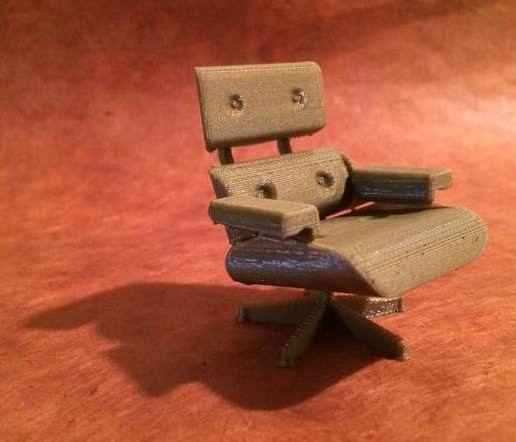Every day, it seems a new industry is experimenting with 3D printing, whether it’s to save time and money, or to simply have fun pushing the limits with a new technology. We’ve seen 3D printing in architecture, both in architectural models and in real world building applications. We’ve seen 3D printed prosthetics and medical innovations, and the technology has even entered the fashion world. Lately we’ve been studying the ways 3D printing is being used in movies and theater, and it’s awesome.
3D printing for theater has actually been happening for several years and has become more common as the technology advances, making it more affordable.
How is 3d printing being used in theater?
One of the most popular applications of 3D printing in theater is prototyping for sets. You can see the work of scenic designers like Kacie Hultgren who showcases her products on Pretty Small Things. Scenic designers will print their own miniature props to visualize how a finished set will look. After creating a scaled down model of a custom set, they then have something tangible to present to directors and set builders who make the final full-size furniture and props.

3D printed Eames lounge chair from Pretty Small Things
3D printing for movies
We got particularly excited when we learned about how special effects studio Legacy Effects uses 3D printing to create life-size prototypes of popular movie costumes and props for major films like Pacific Rim and Iron Man. Everything from monsters and aliens to superheroes and soldiers have been created digitally and 3D printed, saving weeks and even months of time that would otherwise be spent handcrafting props. Talk about a dream job!—to decide how to bring imagined characters into reality, and deciding how they will look and move.
A notable challenge with 3D printing props is knowing when it will save you time and when it will cost you. Complex 3D assemblies, if only created for a single prop, could end up taking more time than creating something out of clay or another standard material—although 3D printing might be more fun.
To outsource, or not to outsource?
As we consider the possibilities that 3D printing creates for different industries, time is a factor in deciding if the technology will be helpful or not. 3D printing in-house and outsourcing 3D printing services both have their advantages and disadvantages for a company using the service on a regular basis. While you have more direct control and supervision of in-house 3D printing, and you can probably come to understand the technology more intimately, it’s also time consuming to learn the technology and deal with the hiccups. You don’t simply buy a 3D printer, scan a model, and hit print. You must take your time learning the functionality to get the most out of the tech, and you can almost bet you’ll be dealing with some unexpected challenges.
If you hire an outside company to 3D print parts, you save a lot of time and gray hair on learning and troubleshooting the technology. You can trust a good 3D printing company to give you the professional parts you want, though you might also end up spending more money, and you don’t get to play with the machines.
A great time to hire an outside company is if you want a more professional part than a consumer-grade printer like the Makerbot will create. SLS, which we do at Ultimate 3D, is a sophisticated 3D printing technology that creates parts with a nicer finish and far more durable material than FDM, which uses filament. So for prototypes, you might be golden with a mid-level 3D printer, but for something that can withstand some more wear and tear, like a prop for final production, you might look to a company with a high-grade 3D printer.
